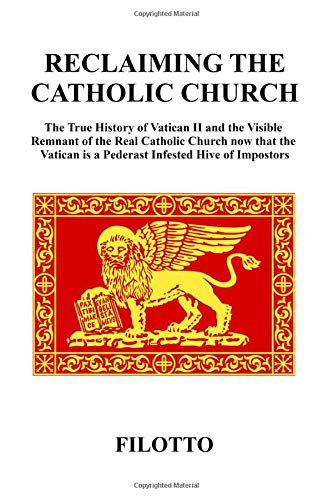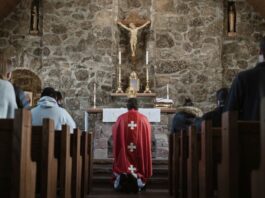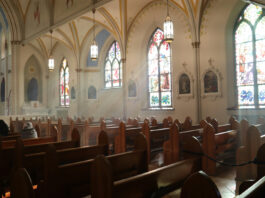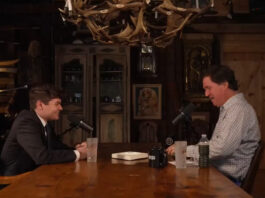Reclaiming the Catholic Church is the latest book by Giuseppe Filotto. The subtitle of the book is, ‘The True History of Vatican II and the Visible Remnant of the Real Catholic Church now that the Vatican is a Pederast Infested Hive of Imposters’. It is a companion book to Filotto’s previous work on the subject, Believe! which I reviewed here. Weighing in at a hefty 500 pages, Reclaiming the Catholic Church is to Believe! what The Lord of the Rings is to The Hobbit. It is a thorough expansion and deeper examination of the topics and ideas presented in the former work.
Filotto’s thesis is that the Catholic Church was systematically infiltrated by Freemason heretical imposters over the 19th and 20th centuries. The Church was aware of the great danger posed by these imposters, with Pope Pius X and Pope Benedict XV committing to the publication of the Code of Canon Law in 1917. This Code set out for all time the comprehensive codification of Latin canon law.
But in 1958 the infiltrators succeeded in raising one of their own to the Papal Chair. As a result of this, the heretical Vatican II Council was held in order to address relations between the Church and the “Modern World”. What it did in practice was to upend two Millennia of Church doctrine and revert the Mass into a bastardised form of Protestantism known as the Novus Ordum. The Church has been in a crisis ever since, both internally and externally. Some external factions have sought to “recognise yet resist” the teachings of Vatican II. Others have gone much further, with the Sedevacantists and Sedeprivationists arguing that since 1958 the chair of St Peter has either been vacant or has been filled by an imposter.
Filotto is a sedeprivationist and this book maps out the arguments for this position. He begins with an examination of what the real Catholic Church and its belief are before they were upended by Vatican II. He then moves on to unearthing the Freemason enemies of the Church in the 19th century, identifying the principle secret organisations and individuals through archived papers that were discovered and published by the various popes of the time. In Chapter 3 he maps out the time period covering the publication of the 1917 Code of Canon Law up to the usurpation of power by the Freemason elements in 1958. Chapter 4 is an in-depth examination of the specific heresies of Vatican II, and chapter 5 briefly and succinctly explains the specific Canon in the 1917 Code which forms the basis of understanding how the last six decades of popes have all been imposters.
The longest chapter is devoted to answering the various arguments of critics of the positions of Sedevacantism and Sedeprivatism. This is the weakest section of the book due to its jumbled array of arguments, particularly section 6.4 which deals with specific objectors to Sedevacantism, including the current pope. Filotto is not at his best here; it is at times more a stream of consciousness than a didactic argument, which has the effect of reducing the potency of his valid points. The final sections of the book deal with the importance of the true Latin Mass and what steps can be taken in light of the facts presented in the book.
The most rewarding chapter for me was the examination of the specific heresies in Vatican II. Filotto takes apart each of the heretical decrees and patiently explains their specific heresies. I was particularly struck by his dismantling of the Decree on the Apostolate of the Laity. A quote from Point 7 in chapter 2 of this document was illuminating in of itself, (Filotto’s emphasis added):
“God’s plan for the world is that men should work together to renew and constantly perfect the temporal order.
All those things which make up the temporal order, namely, the good things of life and the prosperity of the family, culture, economic matters, the arts and professions, the laws of the political community, international relations, and other matters of this kind, as well as their development and progress, not only aid in the attainment of man’s ultimate goal but also posses their own intrinsic value …”
As Filotto states, it is heretical to place on equal footing with Christ the temporal matters of the world. But it is not just the heretical nature of these pronouncements but the modernist language that they use that is shocking to someone reading them for the first time almost 60 years after their publication. But the march to modernity that suffuses the Vatican II decrees are simply the result of the natural progression that followed the direct assault on the kingly order beginning with the American and French revolutions.
Monarchs bring clarity, for good or ill. It is a Kingdom of Heaven, not a democratic republic of heaven. Democracy brings chaos, a continual muddying of the waters that leaves the average man believing in nothing as there is nothing that remains long enough in which to believe. That the Church got into bed with such a state of impermanence is the real earthly tragedy of Vatican II. The spiritual tragedy is another matter entirely.
The repetitive calls in the Vatican II documents for respect of ‘modern institutions’ and ‘international relations’ go further than merely attaching an inflated importance to fleeting earthly matters at the expense of spiritual salvation. Post-Vatican II, man is no longer a being in need of redemption from his earthly sins and failings, but instead a proud and pompous figure of self-importance as he “gets with the times” and fulfills his “vocation on earth”.
On page 234, Filotto quotes from the Pastoral Constitution on the Church in the Modern World. What is striking is how the Vatican II documents precisely mapped out a plan for globalisation decades before the term had taken root. The language is all too familiar to the reader today who has been steeped in globalist propaganda from a young age. Globalist terms and terminology abound: the rights and duties with respect to the human race; the exalted dignity proper to the human person; an improvement in attitudes and abundant changes in society will have to take place if these objectives are to be gained; the common good; the general welfare of the entire human family; guarantee the rights of those who wish to use the media; to meet the circumstances and needs of modern times, on and on it goes.
Through it all is a growing awareness in the reader of a dreadful understanding that this has been a gradual process put in place long before any of us were born. First we turned away from our monarchs, divinely put in place to govern the world. Then we turned away from God as we let our Church be usurped by imposters. And for us born after the great crime of Vatican II is left the terrible understanding that something of critical importance was stolen from us. And not only that but a diseased and fraudulent imposter took its place. That many turned away from God because they were revolted and right in doing so does not give comfort when in the end the mechanics of the Church’s downfall fulfill their aim either way; you are damned if you turn away from God but you are also damned if you stay in their bloated charade of what the real Catholic Church once was.
This book is nonetheless an important step in coming to terms with the forces that are arrayed against us. If you assumed that your time on earth was to be spent collecting expendable experiences and material items and then to die in a retirement home cut off from an uncaring family then this book will safely disabuse you of that diabolical assumption. What comes next is up to us, but if you read these words and then this book then you can no longer operate under the safety net of benign ignorance to the true state of things. Taken in that context, this is the ultimate red pill.
Originally published at Pushing Rubber Downhill. You can purchase Adam’s books here.




